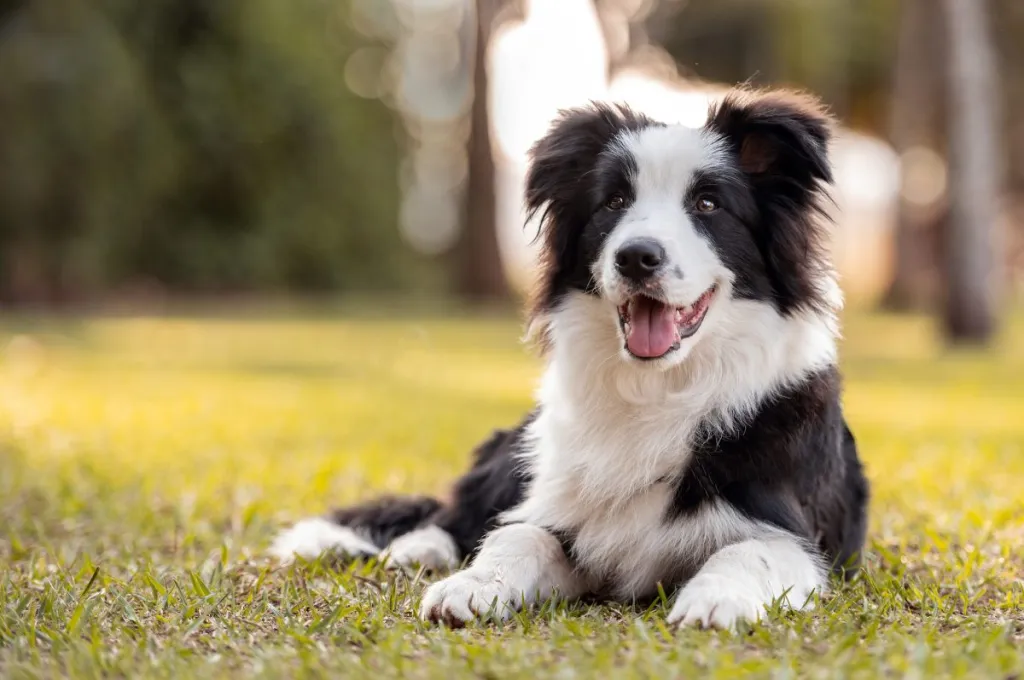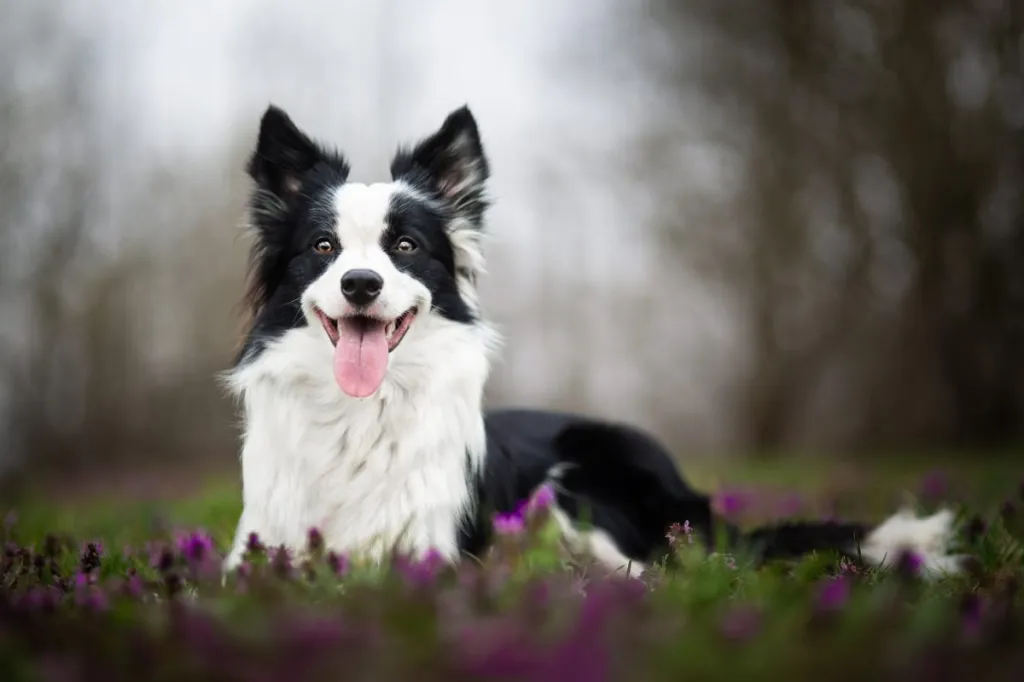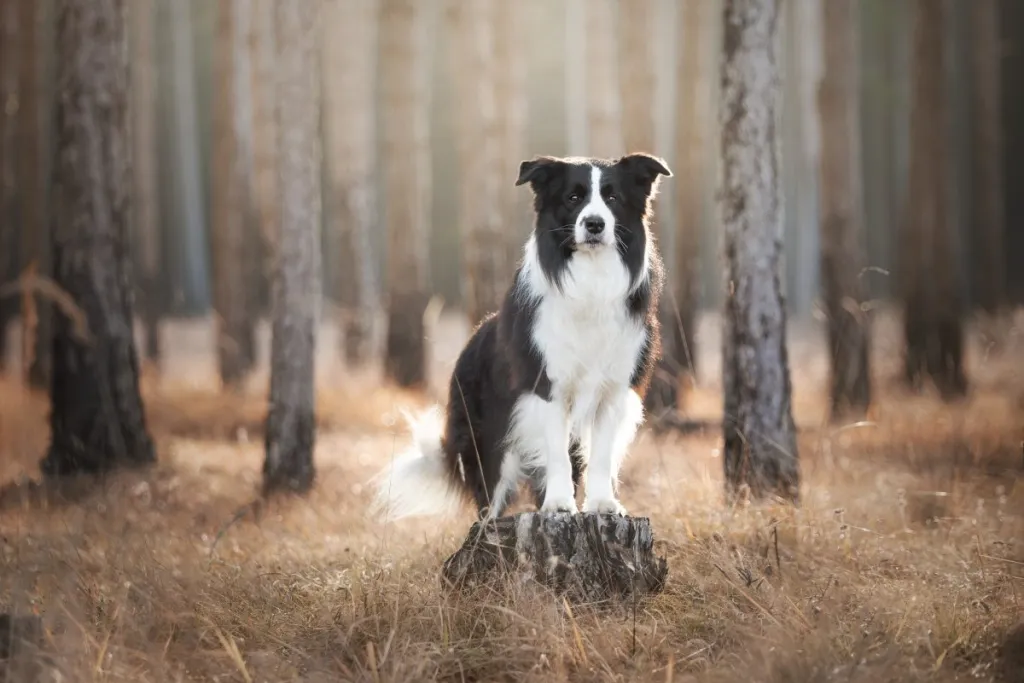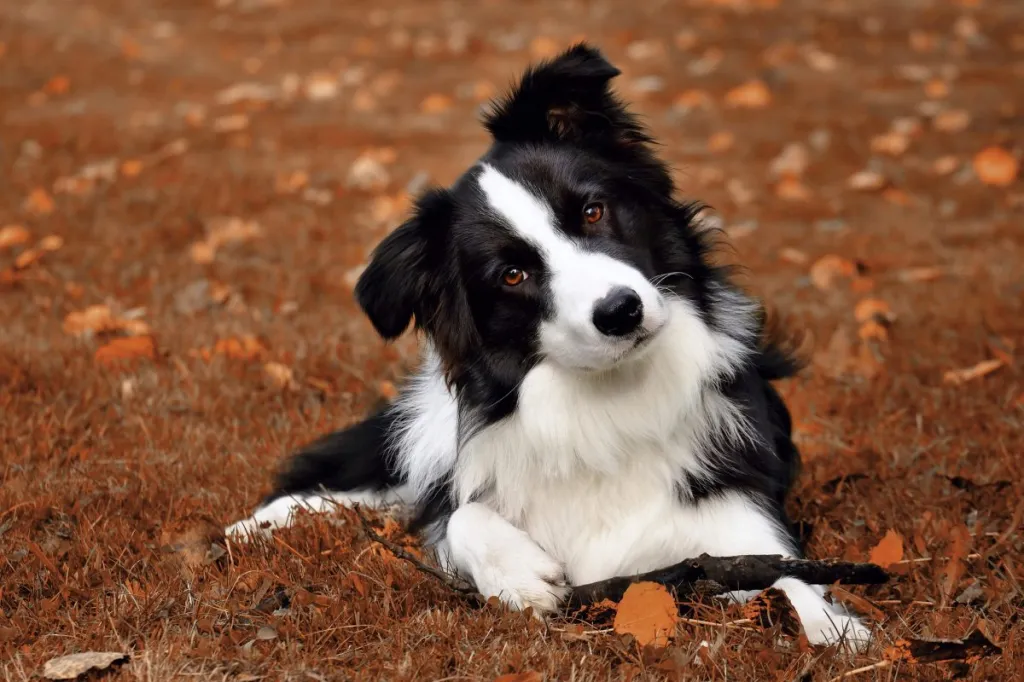If you’re considering opening your heart and home to a Border Collie, you’ve come to the right place. Known for their intelligence, agility, and sheer charm, this breed of dog brings so much joy and vitality to any home. In the guide that follows, we will explore the crucial details about the Border Collie – from its price and average weight, to the color variations, personality traits, and how to handle a puppy. Let’s get started.
“The Border Collie is not just a pet – it’s a high-energy companion and family member with an eagerness to work and play.”

Price
Whether you’re looking to purchase a puppy from a breeder or adopt from a rescue, the price is one of the first aspects to consider. Prices can vary widely, and it is essential to understand the costs associated with owning a Border Collie.
Weight
Knowing the typical weight range of a Border Collie is key to ensuring healthy growth and development. We’ll take a look at the average weight you should expect and tips for maintaining a healthy weight for this active breed.
Temperament
Border Collies are known for their peculiar personality traits. Though each one is unique, there is a general temperament you can anticipate that helps define this breed’s outstanding reputation.
- Price: an essential detail you need to know, including average costs and ownership expenses.
- Weight: crucial measurements, from puppyhood through adulthood.
- Temperament: the characteristics that make this breed unique and beloved.
Ready to find out everything you need to know about Border Collies? Let’s dive a little deeper into each aspect.
breed, originally trained for herding sheep along the border of Scotland and England. They are renowned for their intensive gaze, often referred to as “the eye”, which they use to control their flock. They are one of the top choices for herding dogs on farms and ranches around the world because of their limitless energy, endurance, and work ethic.
Not only are Border Collies exceptional in herding, but their high trainability makes them stand out in several canine sports as well, such as obedience, flyball, agility, tracking, and flying disc competitions. If you ensure they receive plenty of physical and mental stimulation, they can make wonderful family companions. Apart from their need for activity, Border Collies are known to be rather astute and might find ways to outwit you occasionally. Therefore, before you decide to bring a Border Collie puppy into your family, you need to consider and prepare for their specific needs. If you’re up for a loving, active dog breed that will keep you on your toes, the Border Collie might just be the ideal pet for you!
If you’re thinking about getting a Border Collie, remember adoption from a rescue or shelter is a great option to provide love for a dog in need. Nonetheless, if you do choose to buy, ensure you go for a trustworthy breeder. Do your homework to make sure your chosen breeder adheres to ethical standards and puts their dogs’ well-being first. Good breeders prioritize health and temperament, carry out vital health checks, and provide a loving environment for their puppies.
Quick Facts
- Origin: United Kingdom
- Size: 18-22 inches tall and weighing 30-45 pounds.
- Breed group: Herding
- Lifespan: 12-15 years
- Coat: Medium length, can be smooth or rough
- Temperament: Intelligent, energetic, and hardworking
- Exercise needs: High
- Training: Easy to train
- Health: Generally healthy, but can be prone to some health problems, such as hip dysplasia and collie eye anomaly.
- The 1995 movie “Babe“, a heartwarming family film about a kind-hearted pig who aspires to be a sheepdog, strongly features several Border Collies.
- Notable Border Collie pet parents include Queen Victoria, James Dean, Ethan Hawke, Bon Jovi, Matthew Broderick, and Jane Fonda, to name a few.
Border Collie Pictures



Adaptability
★ ★ ★ ★ ★
All-around friendliness
★ ★ ★ ★ ★
Health And Grooming Needs
★ ★ ★ ★ ★
Trainability
★ ★ ★ ★ ★
Exercise needs
★ ★ ★ ★ ★
Border Collie Overview
The Border Collie is a truly impressive breed, especially known for their impeccable herding abilities. Known for their robust stamina, these medium-sized dogs, weighing between 30 to 45 pounds, can sometimes cover up to 50 miles a day when they work, a trait inherited from their early days in the harsh Scottish borders. What’s interesting to note, is that this breed, as perfect as it may seem for work, may not thrive in an environment where they are expected to be a laid-back pet, since they naturally need tasks to stay active.
Due to their in-born herding instinct, a Border Collie is driven to gather and control movement, which can pertain to herding sheep, children, cats, squirrels, or even chasing cars. This instinct to bark, nip, and nudge can’t merely be trained out of them, but rather, it needs to be appropriately channeled into useful tasks or dog sports. It’s important to note that daily walks or a simple game of fetch won’t sufficiently meet a Border Collie’s activity needs.
However, on the brighter side, these dogs can be a joy to live with for the right owner. Their high level of intelligence and agreeable nature makes them easy to train. Known for their sensitivity, Border Collies are said to have an intuitive understanding of their owners’ needs and commands. With proper socialization and training from puppyhood, they can adapt well to various living situations provided they get the mental and physical stimulation they need.
Border Collies are great companions for owners who lead a physically active lifestyle and have a keen interest in dog-related sports and activities. Given the right training, Border Collies can excel in a variety of activities such as sheepdog trials, agility, flyball, flying disc, advanced obedience, freestyle obedience, and tracking. A well-socialized and trained Border Collie can indeed become an inseparable part of their owner or family’s life.
Border Collie Highlights
- Medium-sized dog: Border Collies are medium-sized dogs that stand between 18 and 22 inches tall and weigh between 30 and 45 pounds.
- High energy: Border Collies are very active dogs and require a lot of exercise. They need at least 2 hours of exercise per day, preferably in the form of running, hiking, or playing fetch.
- Intelligent and easy to train: Border Collies are very intelligent dogs and are easy to train. They are eager to please their owners and learn new things.
- Herding instincts: Border Collies were originally bred to herd sheep, and they still have strong herding instincts. They may try to herd other animals, such as cats or children.
- Loyal and affectionate: Border Collies are loyal and affectionate dogs. They make good family pets and are known for being good with children.
- Grooming needs: Border Collies have a medium-length coat that requires regular grooming. They should be brushed at least once a week to remove loose hair and prevent mats.
Border Collie History
Border Collies trace their roots back to the pastoral landscapes of Britain. Shepherd communities from the border region between Scotland and England valued these dogs for their unparalleled sheepherding skills. The breed adapted to varying terrains and tasks, leading to their identification by regional names such as Welsh Sheepdogs, Northern Sheepdogs, Highland Collies, and Scotch Collies. Their current name, Border Collie, reflects their Scottish heritage and their role as collies, or sheepdogs.
The breed gained fame in 1860, featuring in the second-ever dog show held in England. Soon afterward, Queen Victoria, during her visit to Balmoral, fell in awe of these dogs and became a strong advocate for them. The breed’s reputation as elite sheepherders amplified when R.J. Lloyd Price, in 1876, put on a fascinating demonstration of their herding prowess on 100 wild Welsh sheep at the Alexandra Palace in London. The spectators were mesmerized by the dogs’ precision, responding only to their handlers’ hand signals and whistles.
Border Collies today are globally recognized as top-quality sheepherding dogs. This status has led many enthusiasts to argue for breeding standards that prioritize their working abilities over their appearance. Finally, the breed earned official recognition from the American Kennel Club on October 1, 1995.
Border Collie Size
Males stand 19 to 22 inches tall and weigh 35 to 45 pounds. Females stand 18 to 21 inches and weigh 30 to 40 pounds.
Border Collie Personality
The Border Collie is an enthusiastic, intelligent, and busy breed. This quick-learner thrives on activity and challenges. However, keep in mind, if he’s not engaged, he might turn to less desirable actions like barking, digging, or even chasing cars. Remember, he’s designed for herding, meaning he’s happiest when occupied.

This breed is notably attuned with his handler’s cues, responding to the slightest signals such as a distinct whistle or fractional eyebrow raise. But they do have their quirks – they might occasionally display a stubborn or independent streak, and their herding instincts can sometimes lead them to chase after things they shouldn’t.
If not properly socialized as a puppy, the Border Collie might spiral into shyness or fear. That’s where puppy classes come in – they help in exposing the sensitive Border Collie to a variety of social situations and stimuli, thus building their confidence.
Border Collie Health
- Border Collies are typically healthy dogs. However, they are susceptible to certain health issues. It’s crucial to remember that not all Border Collies will encounter these medical conditions, but as a potential owner, it’s beneficial to be mindful of them. Should you decide on getting a puppy, ensure to engage a reputable breeder. A trusted breeder can provide health clearances for both parents of your future puppy. These health declarations indicate that a dog has been vetted for and found devoid of a particular condition. For Border Collies, it’s common to receive health clearances from the Orthopedic Foundation for Animals (OFA) for issues such as —with a rating of fair or better—elbow dysplasia, hypothyroidism, and von Willebrand’s disease. Additional clearances may come from Auburn University for thrombopathia, and from the Canine Eye Registry Foundation (CERF), verifying normal eye health. You can double-check these health clearances by visiting the OFA website (offa.org).hip dysplasia Hip Dysplasia: This is an inherited condition in which the thighbone doesn’t fit snugly into the hip joint. Some dogs show pain and lameness on one or both rear legs, but others don’t display outward signs of discomfort. (X-ray screening is the most certain way to diagnose the problem.) Either way, arthritis can develop as the dog ages. Dogs with hip dysplasia should not be bred — so if you’re buying a puppy, ask the breeder for proof that the parents have been tested for hip dysplasia and are free of problems.
- Progressive Retinal Atrophy (PRA): This is a family of eye diseases that involves the gradual deterioration of the retina. Early in the disease, affected dogs become night-blind; they lose sight during the day as the disease progresses. Many affected dogs adapt well to their limited or lost vision, as long as their surroundings remain the same.
- Epilepsy: This is a neurological condition that’s often, but not always, inherited. Epilepsy can cause mild or severe seizures that may show themselves as unusual behavior (such as running frantically as if being chased, staggering, or hiding) or even by falling down, limbs rigid, and losing consciousness. Seizures are frightening to watch, but the long-term prognosis for dogs with idiopathic epilepsy is generally very good. It’s important to take your dog to the vet for proper diagnosis (especially since seizures can have other causes) and treatment.
- Collie Eye Anomaly: This is an inherited condition that causes changes and abnormalities in the eye, which can sometimes lead to blindness. These changes can include choroidal hypoplasia (an abnormal development of the choroids), coloboma (a defect in the optic disc), staphyloma (a thinning of the sclera), and retinal detachment. Collie eye anomaly usually occurs by the time the dog is two years old. There is no treatment for the condition.
- Allergies: There are three main types of allergies in dogs: food allergies, which are treated by eliminating certain foods from the dog’s diet; contact allergies, which are caused by a reaction to a topical substance such as bedding, flea powders, dog shampoos, and other chemicals; and inhalant allergies, which are caused by airborne allergens such as pollen, dust, and mildew. Treatment varies according to the cause and may include dietary restrictions, medications, and environmental changes.
- Osteochondrosis Dissecans (OCD): This orthopedic condition, caused by improper growth of cartilage in the joints, usually occurs in the elbows, but it has been seen in the shoulders as well. It causes a painful stiffening of the joint, to the point that the dog is unable to bend his elbow. It can be detected in dogs as early as four to nine months of age. Overfeeding of “growth formula” puppy foods or high-protein foods may contribute to its development.
Border Collie Care
While the Border Collie is a highly adaptable dog, he’s best suited to an environment that gives him some elbow room: a city home with a securely fenced yard, or a country farm or ranch. Because he has a propensity to herd and chase, he must be protected from his not-so-bright instinct to chase cars.
Regardless of the environment, he requires a great deal of mental and physical stimulation every day, and he needs an owner who is willing and able to provide that. This can be a great burden to owners who don’t know what they’re getting into. If you’re considering a Border Collie, make sure you can provide him with a proper outlet for his natural energy and bright mind. If you don’t have a farm with sheep, dog sports are a good alternative.
Border Collie Feeding
Recommended daily amount: 1.5 to 2 cups of high-quality dry food a day, divided into two meals.
NOTE: How much your adult dog eats depends on his size, age, build, metabolism, and activity level. Dogs are individuals, just like people, and they don’t all need the same amount of food. It almost goes without saying that a highly active dog will need more than a couch potato dog. The quality of dog food you buy also makes a difference — the better the dog food, the further it will go toward nourishing your dog and the less of it you’ll need to shake into your dog’s bowl. For more on feeding your Border Collie, see our guidelines for buying the right food, feeding your puppy, and feeding your adult dog .
Border Collie Coat Color And Grooming
The Border Collie breed boasts two varieties of coat: rough and smooth. Both are double coats, with a coarser outer coat and soft undercoat. The rough variety is medium length with feathering on the legs, chest, and belly. The smooth variety is short all over, usually coarser in texture than the rough variety, and feathering is minimal. His coat is most often black with a white blaze on the face, neck, feet, legs, and tail tip, with or without tan. However, he may be any bicolor, tricolor, merle, or solid color except white. The hardworking Border Collie isn’t prissy, and he doesn’t need excessive grooming to keep him looking good. His weather-resistant double coat needs weekly brushing to keep coat oils well distributed, and to prevent matting in the rough variety. More frequent brushing during shedding season is a good idea to minimize hair shed around the house (he sheds seasonally).

Bathe only as needed — about every four months or when he’s really dirty or smells terrible. Brush your Border Collie’s teeth at least two or three times a week to remove tartar buildup and the bacteria that lurk inside it. Daily brushing is even better if you want to prevent gum disease and bad breath. Trim his nails once a month if needed, and check his ears once a week for dirt, redness, or a bad odor that can indicate an infection. Then wipe them out weekly with a cotton ball dampened with gentle, pH-balanced ear cleaner to prevent problems. As you groom, check for sores, rashes, or signs of infection such as redness, tenderness, or inflammation on the skin, in the nose, mouth, and eyes, and on the feet. Eyes should be clear, with no redness or discharge. Your careful weekly exam will help you spot potential health problems early.
Border Collie Children And Other Pets
The Border Collie is a good family dog, as long as he is raised properly and receives training when he’s young. He gets along with children and other pets, though his instinct to herd will cause him to nip, chase, and bark at kids (especially very young children) and animals if his herding instincts aren’t otherwise directed.
As with every breed, you should always teach children how to approach and touch dogs, and always supervise any interactions between dogs and young children to prevent any biting or ear or tail pulling on the part of either party. Teach your child never to approach any dog while he’s eating or sleeping or to try to take the dog’s food away. No dog, no matter how friendly, should ever be left unsupervised with a child.
Border Collie Breed Organizations
Finding a reputable dog breeder is one of the most important decisions you will make when bringing a new dog into your life. Reputable breeders are committed to breeding healthy, well-socialized puppies that will make great companions. They will screen their breeding stock for health problems, socialize their puppies from a young age, and provide you with lifetime support.
On the other hand, backyard breeders are more interested in making a profit than in producing healthy, well-adjusted dogs. They may not screen their breeding stock for health problems, and they may not socialize their puppies properly. As a result, puppies from backyard breeders are more likely to have health problems and behavioral issues.